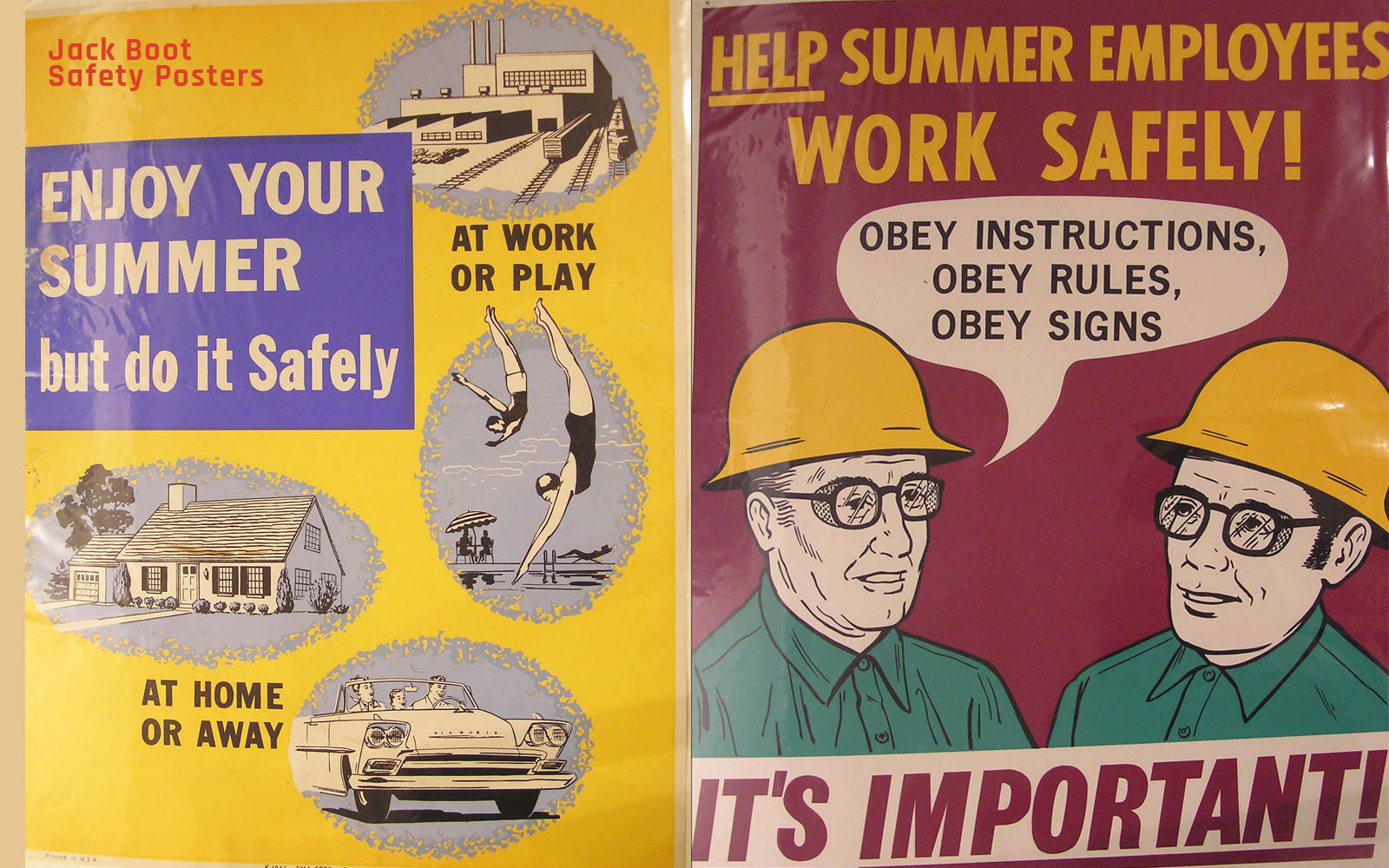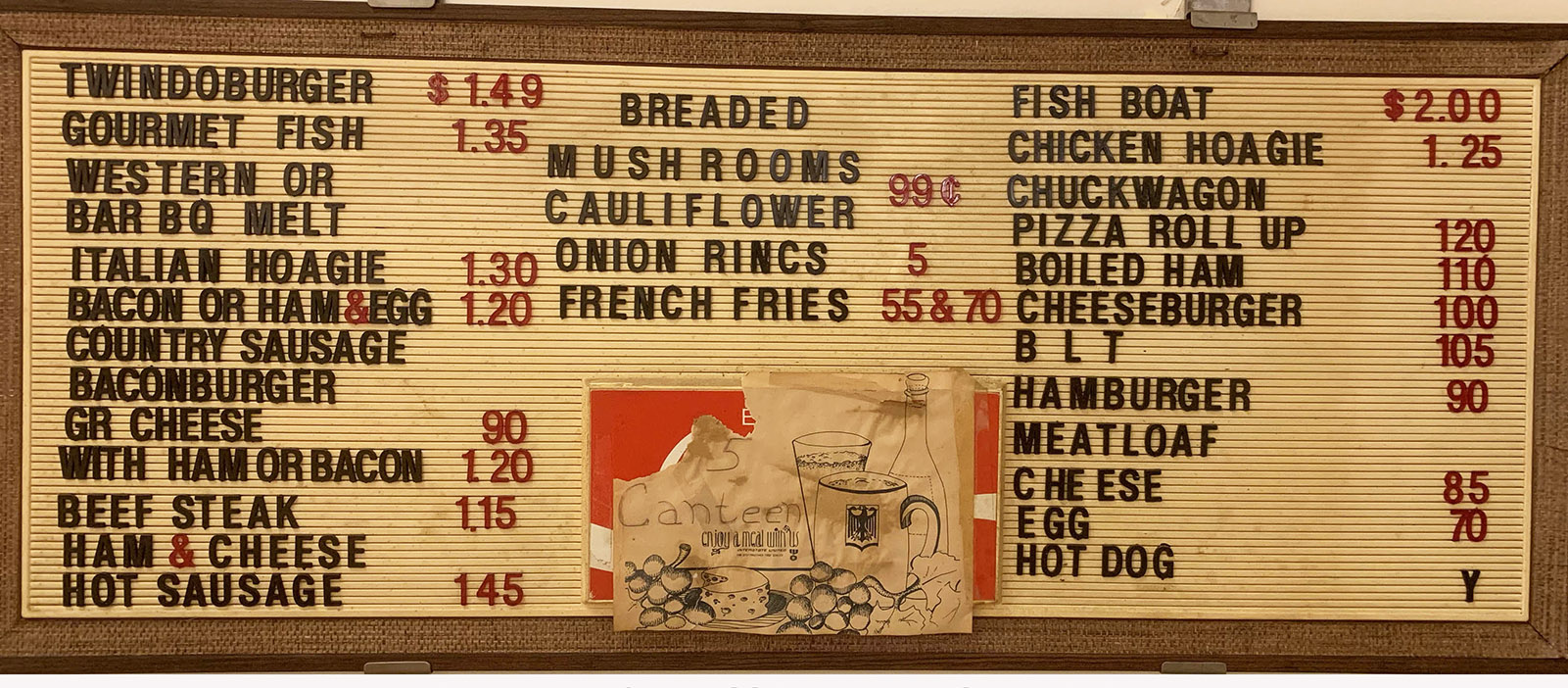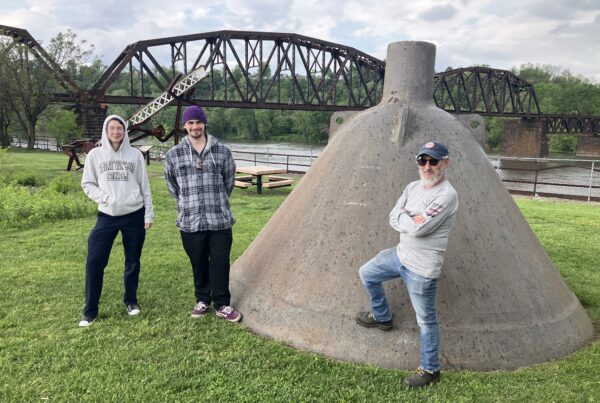
By Ryan Henderson, Interpretive Specialist
 To Collect, Preserve, Display & Share
To Collect, Preserve, Display & Share
A key component of Rivers of Steel’s mission has always been the collection and preservation of materials related to steel and industrial history. While Rivers of Steel may now be best known for our historic properties, our historians have been collecting documents, objects, photographs, clothing, and all manners of ephemera for more than twenty years. One of our organization’s earliest goals was to create a safe place for those items that threatened to disappear during the turmoil that engulfed the steel industry during the 1980s. Hard hats, ID badges, books relating to metallurgy, work clothes, technical drawings, commemorative lighters and paper weights, industrial magazines, safety posters, and all manner of ‘everyday’ items from that era faced the potential to end up in the landfill, or consigned to a corner of the attic or basement.
 When Rivers of Steel first put out the call for donations decades ago, the community responded with overwhelming support. Our archive has had the good fortune to receive the support of local organizations and businesses, dozens of former industrial workers, and a number of dedicated longtime donors, some of whom have made thousands of individual donations. We have managed to unearth truly incredible items: an exceptionally vibrant series of safety posters by local artist Jack Boot, letters from a National Guardsman during the Homestead Strike, the menu that once hung in the Open Hearth 5 Canteen at the Homestead Works (image below), hundreds of black and white headshots of workers from Jones and Laughlin. We have managed to collect and retell the stories of the men and women who made this region what it is today through oral histories, audio / visual collections, and artwork. Above all, we have attempted to ensure that these pieces will not only remain for future generations, but will be available now for all those who wish to access them.
When Rivers of Steel first put out the call for donations decades ago, the community responded with overwhelming support. Our archive has had the good fortune to receive the support of local organizations and businesses, dozens of former industrial workers, and a number of dedicated longtime donors, some of whom have made thousands of individual donations. We have managed to unearth truly incredible items: an exceptionally vibrant series of safety posters by local artist Jack Boot, letters from a National Guardsman during the Homestead Strike, the menu that once hung in the Open Hearth 5 Canteen at the Homestead Works (image below), hundreds of black and white headshots of workers from Jones and Laughlin. We have managed to collect and retell the stories of the men and women who made this region what it is today through oral histories, audio / visual collections, and artwork. Above all, we have attempted to ensure that these pieces will not only remain for future generations, but will be available now for all those who wish to access them.
 Not only has Rivers of Steel created an archive that safely houses over 50,000 unique items, but it also makes these collections open to the public. Our archive is free to access by appointment, and almost any of the items in our collection can be viewed in person with a few exceptions. Additionally, portions of our collection are frequently displayed in our exhibition rooms on the third floor of the Bost Building. We have created a number of exhibits honoring the industrial and cultural heritage from southwestern Pennsylvania, with past shows focusing on topics like Jones and Laughlin Steel, the Little Steel era, folk art from around the region, industrial photography, and our current show which features hidden gems from our collection. Rivers of Steel also frequently works with outside groups or individuals to contribute both art and artifacts our exhibits, such as our current display on the 1919 Steel Strike.
Not only has Rivers of Steel created an archive that safely houses over 50,000 unique items, but it also makes these collections open to the public. Our archive is free to access by appointment, and almost any of the items in our collection can be viewed in person with a few exceptions. Additionally, portions of our collection are frequently displayed in our exhibition rooms on the third floor of the Bost Building. We have created a number of exhibits honoring the industrial and cultural heritage from southwestern Pennsylvania, with past shows focusing on topics like Jones and Laughlin Steel, the Little Steel era, folk art from around the region, industrial photography, and our current show which features hidden gems from our collection. Rivers of Steel also frequently works with outside groups or individuals to contribute both art and artifacts our exhibits, such as our current display on the 1919 Steel Strike.
 Even during the current Covid-19 crisis, Rivers of Steel is working to facilitate access to our archives as safely as possible. While we are not currently receiving visitors to the archive, our staff is more than happy to work with researchers, students, and community members to access our collections online and to fulfill requests as best we are able. Our collections can be searched in their entirety here. Additionally, we have created a new Covid-19 policy for the duration of the crisis in accordance with Pennsylvania State guidelines, viewable here.
Even during the current Covid-19 crisis, Rivers of Steel is working to facilitate access to our archives as safely as possible. While we are not currently receiving visitors to the archive, our staff is more than happy to work with researchers, students, and community members to access our collections online and to fulfill requests as best we are able. Our collections can be searched in their entirety here. Additionally, we have created a new Covid-19 policy for the duration of the crisis in accordance with Pennsylvania State guidelines, viewable here.
We encourage anyone interested in contributing to our archives to get in touch with us at archives@riversofsteel.com about next steps. We have been working hard to preserve our community’s history for the past twenty plus years, and we will continue to protect our valuable cultural resources during these difficult times.
Guide to Images
Featured Image: Two of Jack Boot’s Safety Posters
Image 1: Ryan Henderson speaks to a group in the archives at the Bost Building.
Image 2: Menu board from the Open Hearth 5 Canteen at the Homestead Works.
Image 3: A view of the Bost Building’s third floor gallery, featuring the “From the Vault” exhibition.

 To Collect, Preserve, Display & Share
To Collect, Preserve, Display & Share





